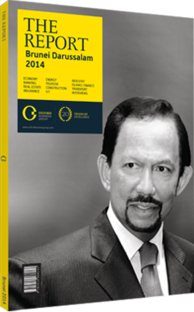OBG talks to Le Luong Minh, Secretary-General, ASEAN

Interview: Le Luong Minh
What are the challenges facing ASEAN member nations in preparing for the ASEAN Economic Community (AEC) in 2015?
LE LUONG MINH: In the lead up to AEC 2015, it is important to complete the regional integration agenda as set out in the AEC Blueprint. Member states need to overcome implementation bottlenecks in AEC measures, namely delays in the ratification of signed ASEAN agreements and protocols; slow alignment of domestic laws and regulations with regional initiatives; and inadequate resources to implement regional and country-specific measures. While important gains have been evident in the process of building the AEC, a key challenge is how to make these gains visible to the people and stakeholders who are the beneficiaries of the AEC.
Closing the economic and development gaps across the region is necessary for the realisation of the AEC by 2015 and beyond. Recognising this fact, ASEAN incorporated “Equitable Economic Development” as the third pillar in the AEC Blueprint, with a focus on narrowing development gaps and promoting small businesses. To achieve a well-connected ASEAN region, strengthening the framework for public-private partnerships (PPPs) for infrastructure development under the Master Plan on ASEAN Connectivity is essential. Mobilising adequate resources to finance related infrastructure projects could be challenging. Thus, despite the existing ASEAN Infrastructure Fund, private capital is a crucial potential source of funding, and ASEAN attaches great importance to PPPs.
How can cooperation within the Brunei Darussalam-Indonesia-Malaysia-Philippines-East Asian Growth Area (BIMP-EAGA) most benefit the region?
MINH: Sub-regional programmes, such as the BIMPEAGA initiative, serve the larger goal of ASEAN integration. BIMP-EAGA is also a platform to address common challenges through strategies that are more suited to particular circumstances, while remaining consistent with ASEAN’s objectives. The programme has played a significant role in translating ASEAN’s physical connectivity agenda into a corridor-specific strategy. The sub-region is well connected by sea and air to most major cities in Asia and continually improves its inter-connectivity and cross-border movement through, for example, the BIMP-EAGA Memorandum of Understanding on Transit and Interstate Transit of Goods.
Its four strategic pillars, namely connectivity, agricultural production, tourism and environment, are aimed at developing strategic policies and programmes that promote the sub-region’s competitive advantages and efficient use of its abundant natural resources. The area is strategically located along some of the world’s busiest shipping lanes. It is a leading producer of coconut, palm oil, livestock and poultry; a popular eco-tourism destination; and has abundant energy resources. Cooperation is particularly important in spurring economic development and improving socio-economic welfare to promote stability and security in the sub-region. BIMP-EAGA comprises provinces that are often located far from national capitals and thus helps to raise the living standards of rural communities.
What role should ASEAN member states play to increase cooperation on the resolution of regional and global disputes?
MINH: ASEAN member states are bound by the ASEAN Charter’s principle of shared commitment and collective responsibility to enhance regional peace, security and prosperity. We also commit ourselves to enhanced consultations on matters that seriously affect our common interests. ASEAN has provided a platform for member states and external partners to come together to discuss issues related to peace, stability and security in the region. This platform is sustained through various mechanisms where ASEAN plays a central role, such as the ASEAN Plus One, ASEAN Regional Forum, East Asia Summit and ASEAN Defence Ministers Meeting Plus. Through these platforms, we seek dialogue and cooperation, rather than confrontation and unilateral action.
You have reached the limit of premium articles you can view for free.
Choose from the options below to purchase print or digital editions of our Reports. You can also purchase a website subscription giving you unlimited access to all of our Reports online for 12 months.
If you have already purchased this Report or have a website subscription, please login to continue.

